Medicine balls are an excellent tool for enhancing soccer training, offering numerous benefits that align with the demands of the game.
From boosting power and strength to improving overall athletic performance, incorporating medicine balls into soccer workouts can lead to significant gains on the field.
This comprehensive guide explores the advantages of medicine balls, provides key exercises, and offers practical tips for integrating them into your training routine.
1. What Are Medicine Balls?
a) Definition and Purpose
Medicine Balls: Medicine balls are weighted, spherical balls that come in various sizes and weights.
They are used in a wide range of strength and conditioning exercises. Their design allows for dynamic movements that add resistance to traditional exercises, enhancing overall fitness and functional strength.
Purpose: The primary purpose of medicine balls is to develop strength, power, and coordination.
By incorporating these balls into workouts, athletes can challenge their muscles in new ways, which can lead to improved performance in sports like soccer.
b) Benefits for Soccer Players
Power Development: One of the most significant benefits of medicine balls is their ability to enhance explosive power. This is crucial in soccer, where quick, powerful movements are essential for shooting, jumping, and tackling. Medicine ball exercises like slams and throws mimic these explosive actions, helping players improve their power output.
Core Strength: Soccer requires a strong core for stability, balance, and effective movement. Medicine ball exercises engage the core muscles, providing a functional workout that enhances a player’s ability to maintain balance and stability during dynamic play.
Functional Training: Medicine ball exercises often mimic the movements and actions performed in soccer. This makes them an excellent tool for developing functional strength that translates directly to on-field performance. Exercises such as rotational throws and lateral movements can enhance agility and coordination, which are vital for success in soccer.
2. Key Medicine Ball Exercises for Soccer
a) Medicine Ball Slams
Description: To perform a medicine ball slam, start by holding the ball overhead with both hands.
Engage your core, and then slam the ball down to the ground with force. Bend your knees slightly to absorb the impact as you follow through with the movement.
Benefits: Medicine ball slams are excellent for building explosive power and upper body strength.
This exercise mimics the forceful actions involved in shooting or tackling, making it a valuable addition to any soccer training regimen.
b. Russian Twists
Description: Sit on the floor with your knees bent and feet slightly elevated. Hold the medicine ball with both hands and lean back slightly.
Rotate your torso to one side, bringing the medicine ball towards the floor beside your hip. Return to the center and rotate to the other side.
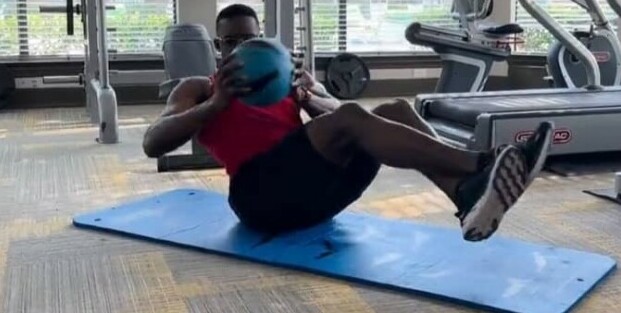 (Picture courtesy of Warren English X blog post)
(Picture courtesy of Warren English X blog post)
Benefits: Russian twists enhance rotational strength and core stability. These qualities are crucial for turning and twisting movements on the field, improving a player’s ability to change direction and maintain balance during play.
c. Medicine Ball Passes
Description: Partner up and stand facing each other at a distance. One player holds the medicine ball at chest level and passes it to the partner using a chest pass or overhead pass. The partner receives the ball and repeats the process.
Benefits: Medicine ball passes develop passing strength and coordination.
This exercise replicates the force and precision needed for accurate soccer passes, helping players improve their ability to deliver powerful and accurate passes in games.
d. Squat to Overhead Press
Description: Begin by holding the medicine ball at chest level with both hands. Perform a squat by bending your knees and lowering your hips. As you stand up, press the ball overhead with both hands, extending your arms fully.
Benefits: The squat to overhead press combines lower body strength with upper body power. This full-body movement enhances overall functional strength and explosive power, which are essential for a wide range of soccer activities.
e. Medicine Ball V-Ups
Description: Lie on your back with the medicine ball held above your head. Simultaneously lift your legs and torso to meet the ball in a V position. Lower back down slowly to complete one rep.
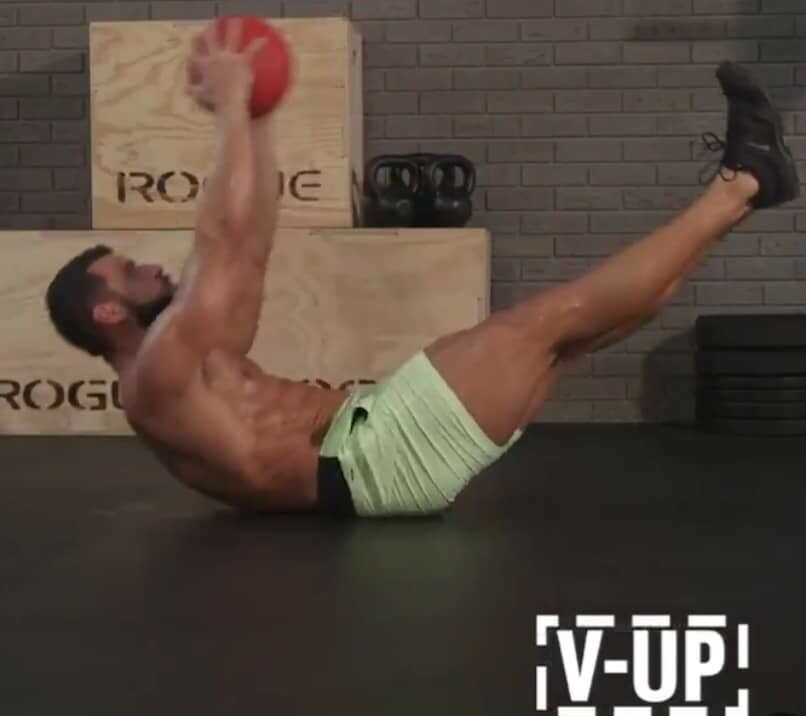 (Picture courtesy of Men`s Health UK )
(Picture courtesy of Men`s Health UK )
Benefits: Medicine ball V-ups strengthen the abdominal muscles and improve core endurance. A strong core is vital for maintaining balance and stability during soccer play, making this exercise particularly beneficial for soccer players.
3. Incorporating Medicine Balls into Soccer Workouts
a) Warm-Up Routine
Dynamic Warm-Up: Start your workout with light medicine ball exercises to activate muscles and prepare your body for more intense activity.
Light passes or small slams can increase blood flow and improve mobility, setting the stage for a productive workout.
Mobility Drills: Include medicine ball exercises that enhance joint mobility and flexibility.
Movements like overhead passes and rotational throws can help loosen up the shoulders, hips, and core, reducing the risk of injury during more strenuous exercises.
b) Strength and Conditioning
Circuit Training: Design a circuit that includes various medicine ball exercises along with other strength and conditioning drills.
For example, combine medicine ball slams with bodyweight squats and push-ups for a comprehensive workout that targets multiple muscle groups.
High-Intensity Intervals: Incorporate medicine ball exercises into high-intensity interval training (HIIT) sessions.
Perform exercises like medicine ball slams and Russian twists in short, intense bursts, followed by brief rest periods. This approach enhances cardiovascular fitness and muscular endurance.
c. Skill-Specific Drills
Soccer-Specific Movements: Integrate medicine ball exercises that mimic soccer movements to enhance sport-specific skills.
For instance, use rotational throws to improve the power and accuracy of your kicks and passes.
Lateral shuffles with a medicine ball can enhance agility and quick footwork.
Partner Drills: Incorporate medicine ball passes or throws with a partner to develop teamwork and coordination. These drills not only improve passing strength but also foster communication and synchronization between players.
4. Tips for Effective Medicine Ball Training
a) Choosing the Right Weight
Start Light: Begin with a lighter medicine ball to master the technique before progressing to heavier weights.
Focusing on proper form ensures that you perform each exercise correctly and reduces the risk of injury.
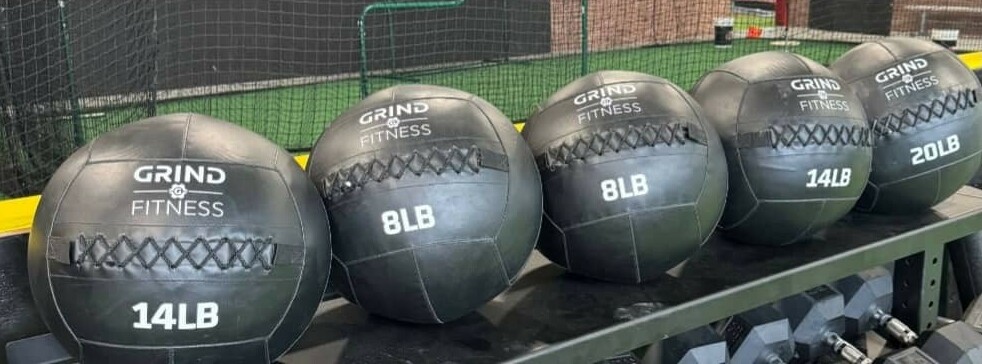 (Picture courtesy of Gerry DeFillipo)
(Picture courtesy of Gerry DeFillipo)
Gradual Progression: As you become more proficient, gradually increase the weight of the medicine ball.
This progression helps build strength and power over time, allowing for continued improvement and challenge.
b) Proper Form and Technique
Controlled Movements: Execute each exercise with controlled movements to maximize effectiveness and minimize the risk of injury.
Focus on proper alignment and technique throughout each repetition.
Full Range of Motion: Perform exercises through the full range of motion to engage muscles fully.
For example, during a squat to overhead press, ensure that you complete the squat and press through the entire movement for maximum benefit.
c) Safety Considerations
Warm-Up Thoroughly: Always perform a proper warm-up before engaging in medicine ball exercises.
This prepares your muscles and joints for the workout, reducing the risk of strains or injuries.
Avoid Overuse: Incorporate medicine ball training as part of a balanced workout regimen. Overuse can lead to injuries, so ensure that medicine ball exercises complement other aspects of your training routine.
5. Sample Medicine Ball Workout for Soccer Players
a) Warm-Up
5 minutes of light jogging or dynamic stretching: Start with a gentle warm-up to prepare your body for exercise.
2 sets of 10 medicine ball passes (chest or overhead) with a partner: Warm up your upper body and improve coordination with partner passes.
b) Main Workout
Medicine Ball Slams – 3 sets of 12 reps: Build explosive power and upper body strength.
Russian Twists – 3 sets of 15 reps per side: Enhance rotational strength and core stability.
Squat to Overhead Press – 3 sets of 10 reps: Combine lower body strength with upper body power.
Medicine Ball V-Ups – 3 sets of 12 reps: Strengthen abdominal muscles and improve core endurance.
c) Cool-Down
5 minutes of gentle stretching focusing on the muscles used: Help your body recover with targeted stretching.
Light medicine ball exercises (e.g., low-intensity passes) for cooldown: Gradually lower your intensity to help with recovery and flexibility.
Conclusion
Medicine balls offer a dynamic and versatile addition to soccer training, helping players improve power, core strength, and functional movement.
By integrating medicine ball exercises into your workouts, you can enhance overall athletic performance and address specific needs on the field.
Whether used in warm-ups, strength training, or skill-specific drills, medicine balls provide a valuable tool for developing explosive strength, better coordination, and greater athleticism.
Embrace the benefits of medicine ball training and watch your soccer players elevate their game to new heights.
Please lets engage in the comment section below if you have experience, additions or questions on this topic.
Happy training
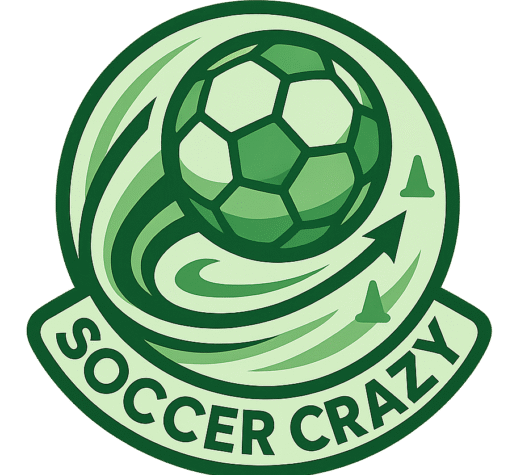
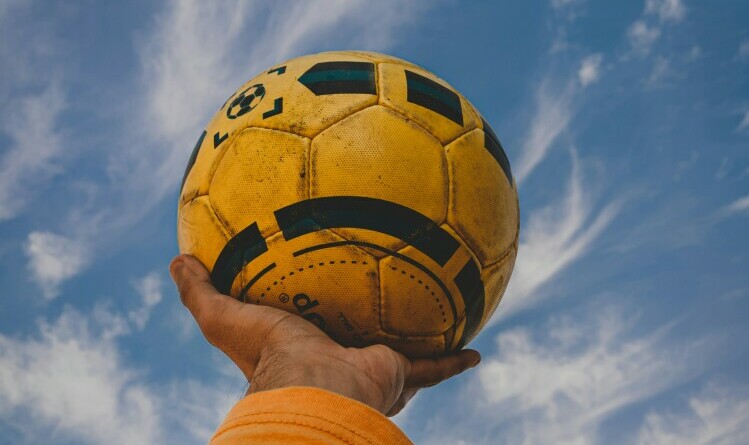
I’ve found that incorporating medicine balls into soccer training really does make a difference! The explosive power from slams is a game-changer, especially for those high-impact moments on the field. And the core strength you build with exercises like Russian twists definitely helps with balance and stability during play.
Medicine ball exercises are so versatile and effective. I especially love the squat to overhead press. It’s a great way to combine lower and upper body strength. Plus, the medicine ball V-ups are fantastic for core endurance. These exercises really help in translating strength and power to soccer skills.